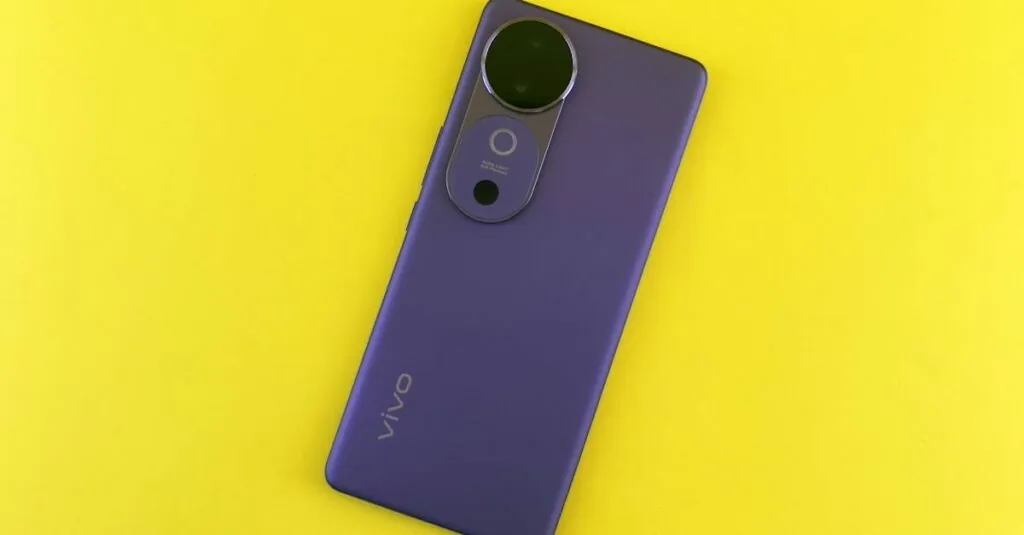In a world where smartphones are practically an extension of our hands and smart fridges can remind us to buy milk, consumer electronics have become the heartbeat of modern life. These gadgets and gizmos aren’t just about convenience; they’ve reshaped how people connect, entertain, and even cook. From the latest 4K TVs that make movie nights feel like a blockbuster experience to wearables that track every step (and snack), consumer electronics are everywhere.
Table of Contents
ToggleWhat Is Consumer Electronics?
Consumer electronics encompass a wide array of electronic devices used for personal purposes. These devices include smartphones, laptops, televisions, tablets, and gaming consoles. Each type plays a crucial role in enhancing everyday experiences.
Smartphones facilitate communication and access to information, while laptops support remote work and online learning. Televisions, particularly with advancements like 4K resolution, provide enhanced visual experiences for movies and streaming. Tablets offer portability for reading and browsing, making them popular among students and professionals.
Smart home devices represent another significant category within consumer electronics. Smart fridges enable users to manage groceries and meals, connecting to apps for added convenience. Home assistants, like voice-activated speakers, help users control various aspects of their homes with simple voice commands.
Wearable technologies also fall under this category. Fitness trackers and smartwatches monitor physical activity, sleep patterns, and health metrics. Enhanced health tracking encourages users to make informed lifestyle choices.
Market growth for consumer electronics reflects rapid technological advancements. The global market is projected to reach USD 1.5 trillion by 2025, showcasing its increasing relevance in daily life. Manufacturers focus on innovation and sustainability to meet consumer demands effectively.
Understanding consumer electronics involves recognizing their impact on convenience, connectivity, and lifestyle. Devices continue to evolve, integrating advanced features and connectivity options. The integration of internet capabilities transforms how consumers engage with technology.
Types of Consumer Electronics
Consumer electronics encompass a variety of devices designed for personal use. Each type serves unique purposes and enhances everyday activities.
Audio and Video Equipment
Audio and video equipment includes devices like speakers and televisions. Smart TVs provide access to streaming services and deliver stunning picture quality. Wireless speakers facilitate audio streaming throughout homes. Home theater systems enhance the movie-watching experience, turning living rooms into cinematic environments. Soundbars streamline audio, offering improved sound for televisions without clutter. In 2020, global revenue for audio and video equipment reached approximately USD 114 billion, reflecting its popularity among consumers.
Personal Computing Devices
Personal computing devices consist of laptops, desktops, and tablets. Laptops support mobility and productivity, making remote work feasible and efficient. Desktops remain powerful for gaming and professional use, often boasting superior performance. Tablets bridge the gap between traditional computers and smartphones, offering portability with larger screens. These devices cater to various user preferences, allowing flexibility for both work and leisure activities. The market for personal computing devices was valued at USD 210 billion in 2021, demonstrating their essential role in modern life.
Home Appliances
Home appliances represent another critical category within consumer electronics. Smart refrigerators are designed to manage grocery inventories and maintain optimal food temperatures. Washing machines and dryers with advanced features enhance laundry efficiency, often with remote control capabilities. Additionally, robotic vacuums simplify cleaning tasks, using sensors to navigate homes. These appliances improve daily routines through automation and connectivity. In 2021, the smart home appliance market reached USD 76 billion, highlighting consumer demand for innovative home solutions.
Evolution of Consumer Electronics
Consumer electronics have undergone significant transformation over the decades. This evolution illustrates the rapid advancement of technology and changing consumer needs.
Historical Context
Consumer electronics trace their origins to the early 20th century. The invention of the radio in the 1920s marked one of the first significant steps into this domain. Following that, television became mainstream in the 1950s, revolutionizing entertainment. The introduction of personal computers in the late 1970s changed how people interacted with technology. The 1990s saw the rise of mobile phones, paving the way for today’s smartphones. Each of these innovations laid a foundation for the diverse array of devices now commonplace.
Technological Advancements
Technological advancements drive the rapid growth of consumer electronics. Over the years, miniaturization has led to smaller, more powerful devices. Additionally, the integration of artificial intelligence enables features like voice control in smart home gadgets. The advent of high-definition and 4K displays has significantly enhanced viewing experiences. Wireless technology has transformed connectivity, allowing for seamless integration in smart homes. Data indicates the global revenue for audio and video equipment reached approximately USD 114 billion in 2020, highlighting the demand for innovation in this sector. Strategic advancements continue to shape consumer behavior and preferences, fostering a competitive market.
The Impact of Consumer Electronics
Consumer electronics significantly shape modern life and the economy. These devices influence how individuals perform daily activities, communicate, and access information.
On Daily Life
Smartphones facilitate instant communication, allowing users to connect across distances. Televisions, especially 4K models, enhance viewing experiences, making movie nights more immersive. Wearable technologies track health metrics, promoting informed lifestyle choices. Smart home devices automate tasks such as cooking and temperature control, increasing efficiency. Tablets provide users with portable options for reading and browsing, contributing to a more flexible lifestyle. These gadgets collectively redefine routines, making tasks easier and more enjoyable.
On the Economy
The global consumer electronics market is expanding rapidly, projected to reach USD 1.5 trillion by 2025. Revenue from audio and video equipment alone was about USD 114 billion in 2020. Personal computing devices contributed approximately USD 210 billion in 2021, reflecting the growing demand for remote work solutions. Smart home appliances are also gaining traction, with a market value of USD 76 billion in 2021. As companies invest in innovation and sustainability, the economy continues to benefit from this booming sector. Consumer electronics drive job creation and shape market trends, reflecting their integral role in economic growth.
Trends in Consumer Electronics
Consumer electronics are rapidly evolving, reflecting the latest technological innovations. Two major trends define the current landscape: emerging technologies and sustainability.
Emerging Technologies
Artificial intelligence significantly enhances user experiences in consumer electronics. Smart devices, equipped with AI, can learn preferences and automate tasks, making daily life smoother. Voice recognition features enable hands-free operation, improving accessibility. In addition, augmented reality applications are gaining traction, particularly in gaming and retail. Such technologies engage users in interactive experiences, while 5G connectivity allows for faster, more reliable device communication. Compatibility with Internet of Things devices continues to expand, enabling seamless integration within smart home ecosystems. Overall, innovation drives the market forward, creating new opportunities for consumers and manufacturers alike.
Sustainability and Eco-Friendliness
Sustainability has become a focal point for manufacturers in consumer electronics. Eco-friendly materials increasingly replace traditional plastics, reducing environmental impact. Many companies now prioritize energy efficiency to minimize power consumption in their devices. Additionally, recycling programs are more prevalent, helping to reduce electronic waste. From packaging designs to product lifecycles, businesses emphasize their commitment to sustainability. Such initiatives resonate with environmentally conscious consumers, influencing purchasing decisions. Regulatory standards are also shaping industry practices, pushing towards greener production methods. Enhancements in this area not only benefit the planet but also cater to a growing consumer demand for sustainable options.
Consumer electronics have become essential in shaping modern lifestyles. These devices not only enhance convenience but also redefine how individuals interact with their environment and each other. As technology continues to advance, the integration of artificial intelligence and sustainability practices will likely drive further innovation in this sector.
The ongoing evolution of consumer electronics promises to enrich daily experiences while addressing environmental concerns. With an expanding market and increasing consumer demand, it’s clear that these gadgets will remain at the forefront of technological progress, influencing both personal lives and the broader economy.



